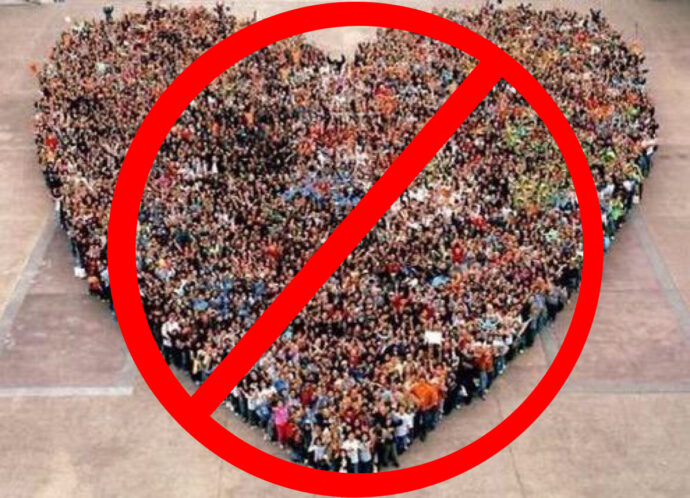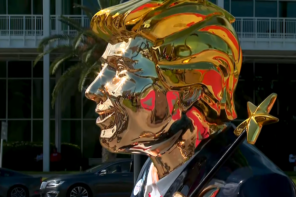So my article from last week on the supposedly emerging religious left has attracted some conservative appreciation, which is not really surprising. More disconcerting is exactly who liked the piece: Mark Tooley of the Institute for Religion and Democracy, Southern Baptist Theological Seminary president Albert Mohler, and conservative media critic Terry Mattingly. Those are all people I’ve made a lot of fun of over the years—and of whom I have been sharply critical. It’s uncomfortable to say the least to think that we’re more or less in agreement about the thinness of this story. And yet here we are.
The more is the broad strokes: these guys are about as skeptical as I am that there’s a religious left revival going on. The less is the why of the situation. They’d like to think liberal ideas just aren’t as popular with people of meaningful faith; I think there are some structural differences behind the disparity.
For example, there’s a good bit of truth to Mohler’s theory that there is no organized liberal counterpart to the Religious Right because the secular left doesn’t need them.
The reason for this is pretty straightforward. A distinctive feature of conservative Christianity—certainly with evangelicals, a little less so with Catholics—is the tendency to live within a subculture. There are distinct schools, media, pop culture, customs, behaviors, assumptions. That makes it much easier to organize a coherent political movement. The people you want to get together are on the same page, and they’re already connected.
Liberals, by contrast, are more diverse: to speak of the religious left, you have to talk about Christians, Jews, Universalists, Buddhists, even Muslims. They’re also more open to the wider culture. Without sharp delineations, religious liberals are generally at a distinct disadvantage in coming together as a cohesive interest group. It’s not an accident that the exceptions to that rule are in the black churches and among Hispanic Catholics. The shared identity gives them a boost in creating formal structures to represent their interests.
Because there is no liberal faith subculture, there aren’t strong liberal faith interest groups, and because there aren’t liberal faith interest groups, the secular left leaders don’t feel a need to cater to the demographic. It’s not that their ideas are unpopular, it’s that there’s not enough cohesion to bring the ideas into focus.
In fact, that’s often why I object to the idea of a new religious left. I see it as an attempt to put certain organizations at the head of the movement, whether or not they deserve it, and whether or not it actually exists.
The lack of a religious subculture produces another structural difference between left and right. Speaking in very broad terms, liberals see faith as giving them ethics, rather than a universal morality. That is, religious belief provides moral guidelines, but these still have to be applied to individual situations, with quite a bit of room left for diverse outcomes. This makes sense if you stop to think about it: if the world you live in is pluralistic, you accommodate different possible answers to the same questions. But if you live in a culture with more agreement on what God’s will is and how it should be applied, you’re more likely to see that as universal. (Again, this is very broad, and it’s possible to make too much of the distinctions.)
When liberals think about morality, then, they see a heuristic, not a law. They resent perceived attempts to impose moral perspectives on others. If you want to know why liberals don’t want “religious authoritarians” showing up in the religious left, look no further than the recently dropped “fetal heartbeat” bill in Iowa, which would have established criminal penalties for doctors performing abortions after 20 weeks and given parents control over adult women’s bodies. Conservatives may know that killing an unborn child is always and everywhere wrong, but liberals know that women need to make sometimes agonizing choices with the assistance of medical professionals, and they don’t want outside interference in that process, regardless of their own convictions on abortion.
You can call this secular, especially if you can’t quite bring yourself to believe that God would ever accept abortion as a moral option. The point is that liberals use religion-neutral thinking. That is, they don’t mind religiously-based moral reasoning for political positions. If you want to maintain SNAP benefits because you think that’s what God wants, fine. But most liberals also don’t think that kind of reasoning is necessary, and it’s certainly insufficient by itself. If you want to be philosophical about it, you can say liberals look for Habermas’ “overlapping consensus,” but the plainer way of putting it is that they think policies should work for everyone, religious or not. They’re not about to apologize for that.
In sum, most people on the left aren’t hostile to faith, but they’re only willing to cede it so much authority. That’s not because liberal clergy deal away the moral (or even revealed) content of their faith, as the stereotype often has it. In fact, I and many colleagues across denominations struggle mightily to know God and to understand where our faith is leading us. But we take pluralism seriously, and we are painfully aware of how faith has been used to control, hurt, and oppress the vulnerable.
Tooley, Mohler, and Mattingly are all quick to point out the decline the supposed liberal mainline churches as a cause for and effect of the weakness of the religious left. It’s worth remembering that this narrative isn’t supported by social science research. It’s also worth a reminder that conservative churches are in trouble too. The Southern Baptist Convention has stalled in membership and is now in decline, and the biggest source of the religiously affiliated is the Catholic church, hardly known for its radicalism. Meanwhile, those same unaffiliated people make up a relatively small part of the Republican party, but they’re growing quickly. Ask not for whom the bell tolls, boys: it tolls for thee.
More narrowly, focusing on the overwhelmingly-white mainline churches gives a distorted view of the religious left. As mentioned above, it’s organizationally most vibrant not among white liberals, but in black and Hispanic communities. What we think of as the religious left will no doubt change as the nation gets browner. With Asians now the fastest-growing demographic group in the U.S., we could be in for a real scramble in the next couple of decades.
But there is one thing Tooley, Mohler, and Mattingly almost certainly agree with me on, which is that current configuration of the religious left doesn’t seem up to challenging the onslaught of Trumpism. For that matter, neither has the Religious Right (or simply conservative Christianity) demonstrated they’ve got what it takes. Faithful people, whether left or right, are increasingly sidelined as racialized demons are set free and truth becomes more and more determined by ideology. My concern, as a Christian, a citizen, and a liberal, is to have the most effective response possible to the corrosive effects of corruption, malevolence, and incompetence. I’m hoping my newfound conservative appreciators share that desire, even if they don’t agree on how to realize it.





